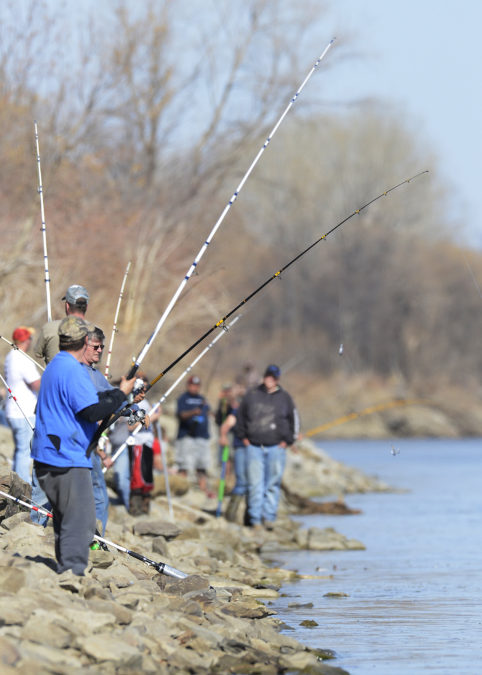One of my first work details after I became a game warden in 1996 was as part of a detail during the paddlefish snagging season. And since then I’ve watched them, weighed them, even tried the caviar, but I’ve never landed one of the prehistoric native fish that can weigh well over 100 pounds.
I was even living in Williston, sort of the hub of the paddlefishing season, as a youngster nearly 40 years ago in 1976, at the time the state Game and Fish Department first established a paddlefish snagging season.
Over the years the fish haven’t changed much in terms of how big they grow or where they’re found, but some significant season management has taken place:
- 1976: First established daily limit on paddlefish at two per day and two in possession.
- 1981: Daily limit reduced to one, but possession limit stayed at two.
- 1985: Possession limit reduced to one.
- 1992: First year of tag system. Each snagger could purchase two tags.
- 1996 and 1997: Only one tag allowed per snagger per season.
- 1996: First year a harvest cap was established. The cap was 1,500 fish taken in North Dakota through 2002. From 2003 to the present, the annual harvest cap has been 1,000 fish.
- 1998-2000: Two tags per snagger again allowed. One tag per season allowed since 2001.
- 2001: First year the paddlefish season was closed early because of the harvest cap.
North Dakota’s 2015 paddlefish snagging season is scheduled to run from May 1 and through the end of May. However, depending on the overall harvest, an early in-season closure may occur with a 24-hour notice issued by the Game and Fish Department.
Snagging is legal in all areas of the Yellowstone River in North Dakota, and in the area of the Missouri River lying west of the U.S. Highway 85 bridge to the Montana border, excluding that portion from the pipeline crossing (river mile 1,577) downstream to the upper end of the Lewis and Clark Wildlife Management Area (river mile 1,565).
Snaggers should be aware that mandatory harvest of all snagged paddlefish is required on Tuesdays, Wednesdays, Fridays and Saturdays. On these days, all paddlefish caught must be tagged immediately.
Legal snagging hours are from 8 a.m. to 9 p.m. daily. Snaggers are allowed only one tag per season.
Snag-and-release of all paddlefish is required on Sundays, Mondays and Thursdays. Those planning to participate during snag-and-release-only days need to have in their possession a current season, unused paddlefish snagging tag. Use or possession of gaffs is prohibited on snag-and-release-only days, and, if it occurs, during the snag-and-release extension period.
All paddlefish snagged and tagged must be removed from the river by 9 p.m. of each snagging day. The use or possession of a gaff hook within one-half mile in either direction of the Highway 200 bridge on the Yellowstone River is illegal at any time during the snagging season.
If the season closes early because the harvest cap is reached, an extended snag-and-release-only period will be allowed for up to four days immediately following the early closure, but not to extend beyond May 31. Only snaggers with a current season, unused paddlefish snagging tag are eligible to participate. Only a limited area at the confluence of the Missouri and Yellowstone rivers is open to this extended season snagging opportunity.
All paddlefish snaggers must possess a paddlefish tag in addition to a valid fishing license and certificate that may be required. Cost of a paddlefish tag is $10 for residents and $25.50 for nonresidents.



